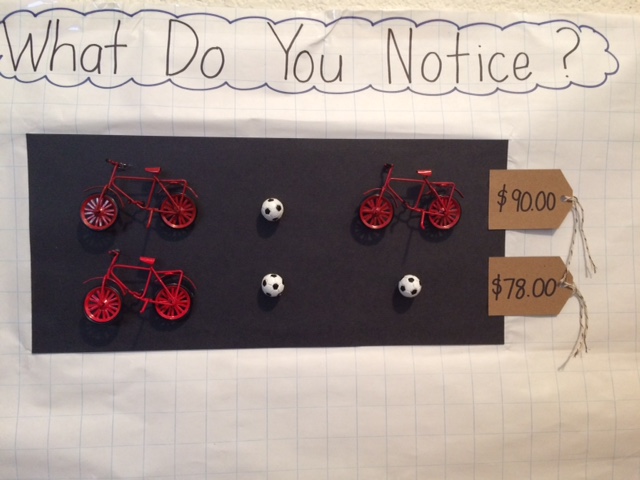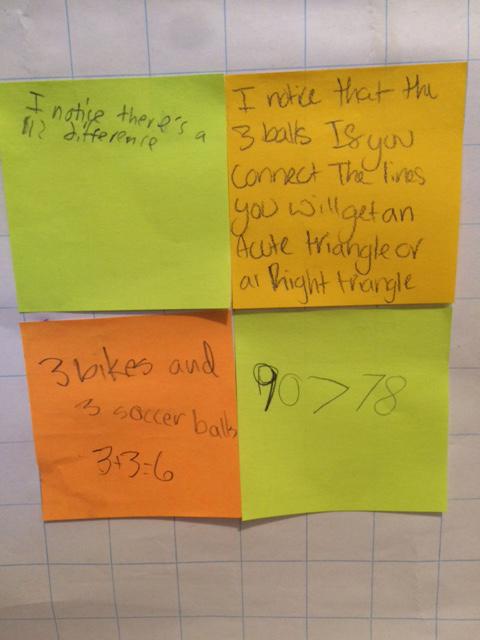
Primary students (K-2): number recognition, counting, comparing, money
Intermediate students (3-5): money, logic, algebra, arithmetic
The goal for this is to figure out the cost of each item. It's not an easy thing to do for elementary students, even upper elementary students. But with the help of logic and their parents, they could solve it. Using logic, students can figure out that the bike is $12 more than the ball by simply canceling out one bike and one soccer ball from each row. Then $78 - $12 = $66. $66/3 = $22 which is the cost of each ball. $22 + $12 = $34, the cost of each bike. Algebraically, it would look like this:
Equations that represent what we know: 2B + S = $90 and B + 2S = $78 (B = bike; S = soccer ball)
Step 1: Create an equation in the form of 'B =' with the second equation so that we can insert that into the first equation above. B = $78 - 2S)
Then fill in the equation and solve for 'S':
2($78 - 2S) + S = $90
$156 - 4S + S = $90
$156 - 3S = $90
-3S = -$66
3S = $66
S = $22

"I notice there's a $12 difference."
"I notice that the three balls...If you connect the lines you will get an acute triangle or a right triangle."
"3 bikes and 3 soccer balls. 3 + 3 = 6."
"90 > 78"